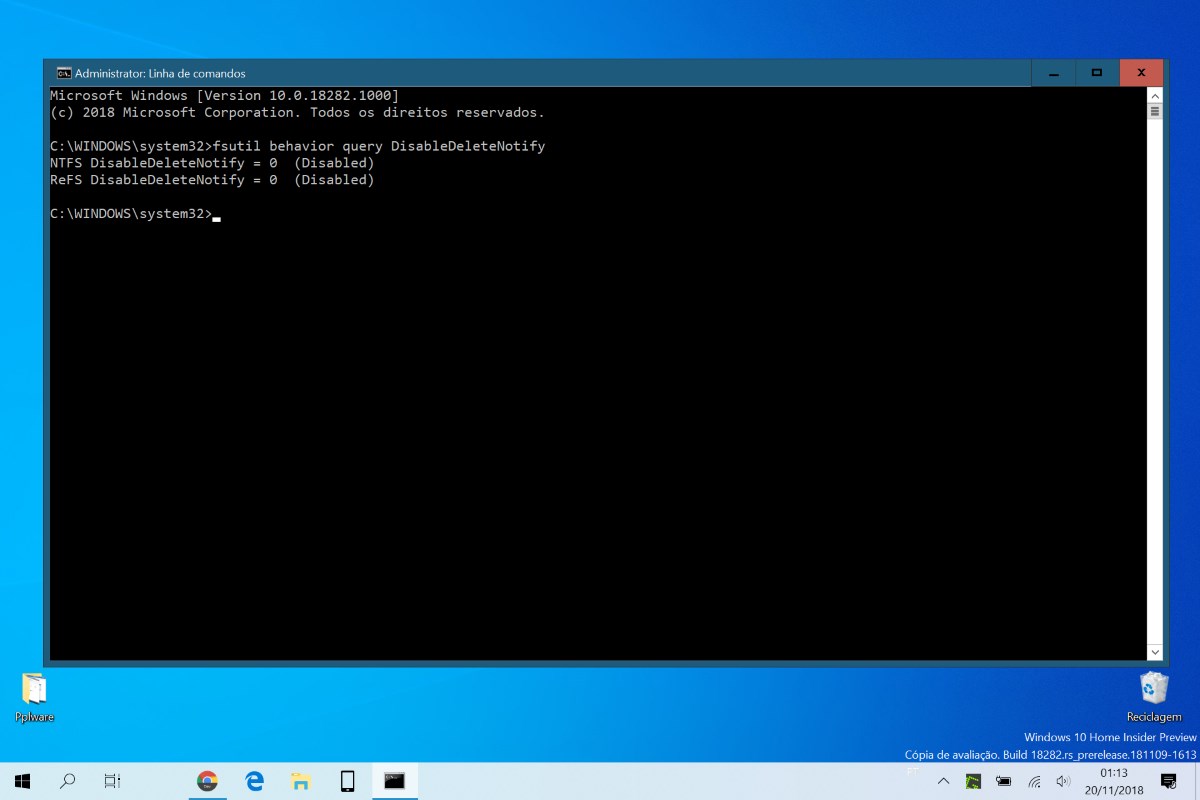
- Fsutil behavior set disabledeletenotify 0 how to#
- Fsutil behavior set disabledeletenotify 0 windows 10#
- Fsutil behavior set disabledeletenotify 0 windows 7#
Since the low-level operation of SSDs differs from HDDs, the Trim command handles deletes/format requests.
Fsutil behavior set disabledeletenotify 0 windows 7#
Microsoft started adding support for SSDs in Windows 7 / Windows Server 2008 with the Trim command. You can defrag and optimize an SSD, but it is not recommended since SSDs have limited read/write cycles, and any program that intensively accesses the SSD could shorten the life span of the drive. So when your computer reads and writes to it, the data is going back to the same location on the drive. Now SSD's are different in that there are no moving parts inside, just memory chips. And they do need to be defragmented and optimized regularly. At that time, HDDs were the only type of drive available, and they are still the de facto standard in the industry. The issue of drive fragmentation stemmed from the early '80s when Microsoft needed an OS, and they bought Quick and Dirty Operating System ( QDOS) and renamed it MS-DOS. The Optimize Drives screen will tell you what kind of drive(s) you currently have in your computer. To find out what type of drive(s) you have, follow the standard instructions below. The kind of drive you have determines whether you need ( or want) to defragment and optimize it. There are two ( 2) types of drives used in computers, Hard Disk Drive ( HDD) and Solid State Drive ( SSD).
Fsutil behavior set disabledeletenotify 0 how to#
Here's how to defragment and optimize your drive in Windows 10. But you can keep all of the folders and files on your computer organized with regular defragmentation. The same thing can happen when your computer's drive becomes fragmented. If you want to disable SSD TRIM Support, enter the below command in a command prompt.Have you ever tried to find a file in a disorganized filing cabinet? It can take some time. In order to enable TRIM Support for SSDs, enter the following command:įsutil behavior set DisableDeleteNotify 0ģ. If DisableDeleteNotify = 0 -> TRIM support enabledĢ.

If DisableDeleteNotify = 1 -> TRIM support disabled
Fsutil behavior set disabledeletenotify 0 windows 10#
If you want to check if SSD TRIM Support is enabled in your Windows 10 computer, open the Elevated command prompt (Admin) and type the following command:įsutil behavior query DisableDeleteNotifyĬompare the results with the results given below to check whether TRIM Support is enabled or not.

Steps to Check and Enable or Disable SSD TRIM Support in Windows 10ġ. The following tutorial mainly aims at checking, enabling or disabling TRIM support for SSD but the same commands can be used for the previous versions as well. It must have a SSD with TRIM enabled firmware and a BIOS/UEFI storage controller set to AHCI/SATA mode. Your computer must run Windows 7, 8, 8.1 or the latest Windows 10. There is some minimum system requirements in order to check if your computer supports SSD TRIM. A block of memory is to be re-programmed and hence TRIM leverages its functioning speed by getting rid of all unused data. It is very important to remove those block of data in order to provide space for meaningful storage. Often it happens that a lot of memory remain unused for a prolonged time.

The SSD TRIM command is an essential feature which is required to manage your Solid State Device memory.


 0 kommentar(er)
0 kommentar(er)
